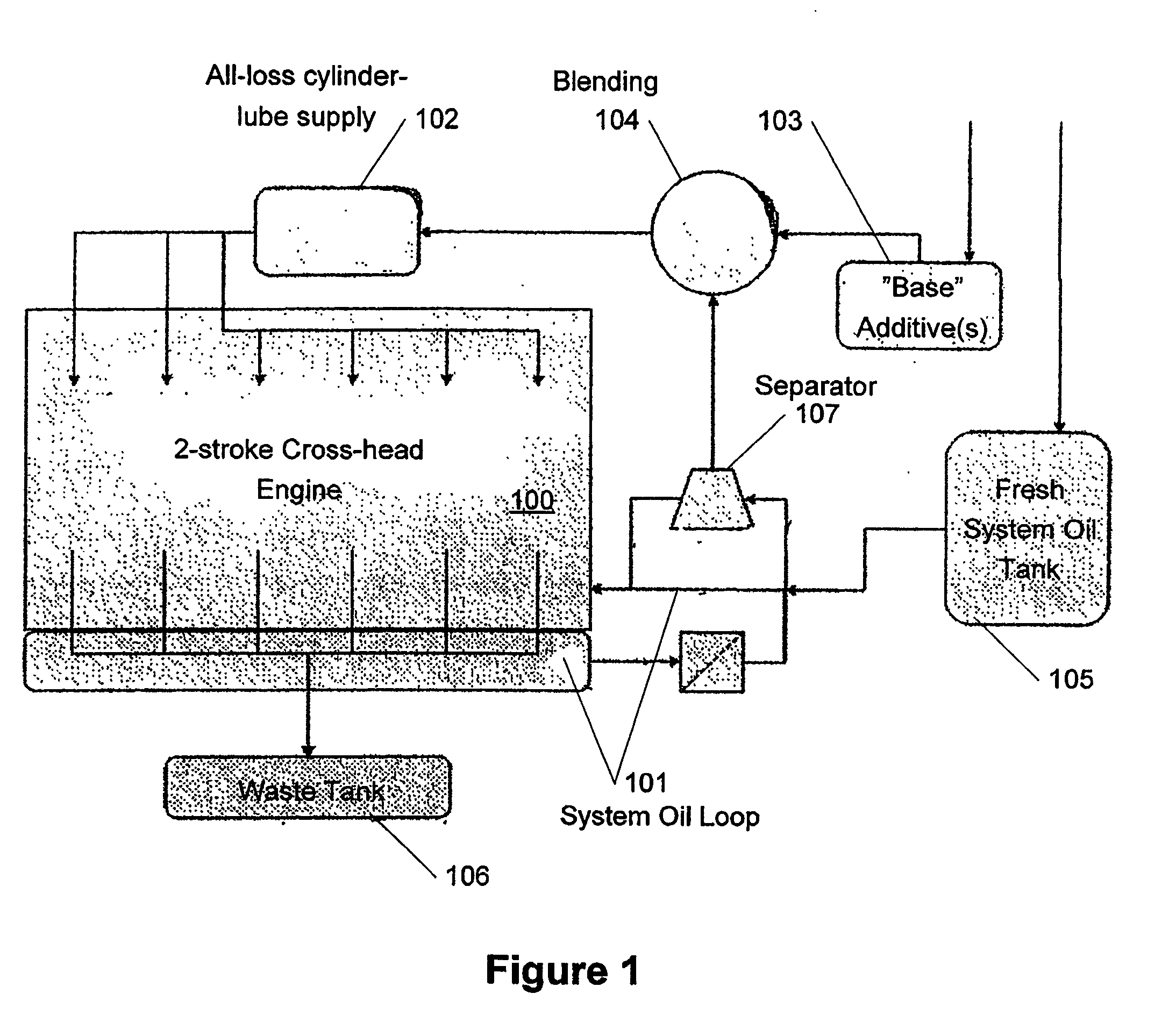Method and system for modifying a used hydrocarbon fluid to create a cylinder oil
a technology of hydrocarbon fluid and cylinder oil, which is applied in the field of system for creating an allloss lubricant, can solve the problems of contaminating system oil, constant influence of piston engine oil exposure to combustion process, and leakage of spent cylinder lubricants, etc., and achieves cost-effective and simplified
- Summary
- Abstract
- Description
- Claims
- Application Information
AI Technical Summary
Benefits of technology
Problems solved by technology
Method used
Image
Examples
Embodiment Construction
[0040]FIG. 1 shows a schematic block diagram of one embodiment according to the present invention. Shown are an all-loss cylinder lubricant supply comprising cylinder oil (102), base additive(s) (103) and a system oil loop comprising at least one initial fluid (101). Further shown is a two-stroke crosshead engine (100), a waste tank (106), a fresh system oil tank (105), a separator (107) and a blending apparatus (104) for carrying out the present invention.
[0041] According to the present invention the cylinder oil is created by modification of at least one initial fluid (101) by determining the TBN(s) of the at least one initial fluid, determining a desired TBN of a cylinder oil (102) and adjusting the TBN(s) of the at least one initial fluid (101) accordingly by blending the at least one initial fluid (101) with suited additive(s) (103). This is preferably done by the blending apparatus (104). Preferably, the at least one initial fluid are at least partially used oil(s). Hereby, a...
PUM
| Property | Measurement | Unit |
|---|---|---|
| acid level | aaaaa | aaaaa |
| viscosity | aaaaa | aaaaa |
| flow rate | aaaaa | aaaaa |
Abstract
Description
Claims
Application Information
 Login to View More
Login to View More - R&D
- Intellectual Property
- Life Sciences
- Materials
- Tech Scout
- Unparalleled Data Quality
- Higher Quality Content
- 60% Fewer Hallucinations
Browse by: Latest US Patents, China's latest patents, Technical Efficacy Thesaurus, Application Domain, Technology Topic, Popular Technical Reports.
© 2025 PatSnap. All rights reserved.Legal|Privacy policy|Modern Slavery Act Transparency Statement|Sitemap|About US| Contact US: help@patsnap.com

